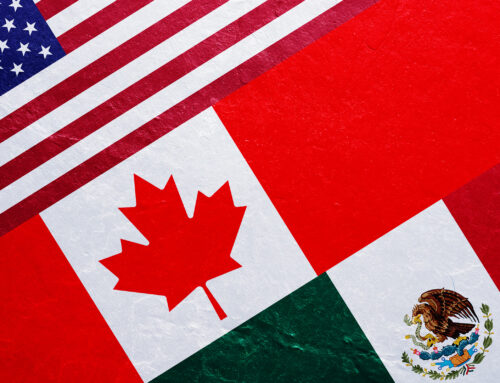The battlefield of B2B sales has witnessed a crushing wave of fear and intimidation over the last two decades. Trained, empowered, and incentivized by their leadership, procurement teams have harnessed the dark side of negotiation for the sole purpose of pushing prices as low as possible. They suck the energy and confidence from sales teams by shattering arguments, manipulating math, and mercilessly wringing higher discounts in ways that would make Darth Vader and the Galactic Empire proud.
The Star Wars analogy is appropriate here for a couple of reasons. First, sales teams’ arguments, confidence, and math shouldn’t be that fragile. Second, let’s remember that in Star Wars the good guys ultimately win by fighting back, not hiding in fear and hoping for better days. The rebels win by playing better offense, not better defense.
Recent studies show that the appeal to play better offense is not empty rhetoric. CEB, an insights and technology company, reports that the best-performing B2B salespeople are, “challengers” who “build constructive tension” and “take back control of the purchase conversation”. In contrast, the salespeople CEB calls “relationship builders” are the least likely to be high performers.
Translation: relationship selling is dead, and the operative word in B2B sales is fight, not fear. The Rebel Alliance didn’t try to get on Darth Vader’s good side by sending him a gift basket and inviting him to play 18 holes of golf. They rose to the challenge by turning the sales “force” back against him.
Pricing Solutions has been in the B2B sales trenches for years, helping teams develop the weaponry, strategy, tactics, and confidence they need. To help you rise to your own sales challenges, we’ve distilled our learnings into the seven things that best-in-class B2B sales teams do differently.
Get the Weaponry You Need
Even a superhero needs the right tools. A bow and arrow may work for hunting in the desert, but Jedi Knights win with light sabers and blasters. In the same vein, the best 21st century sales teams play offense with words and numbers at their disposal.
1. Get Data that Wins
Yes, everyone is drowning in data. The challenge is to pick the data that will win arguments by establishing and enforcing the value you deliver. You need value calculators packed with relevant data and algorithms to build a quantitative case which resists procurement’s efforts to push back. This applies not only to value, but also to fairness, as we will discuss shortly.
2. Know Your Value Inside and Out
Think in terms of what makes your products or services distinct, special, and unique. Embrace and emphasize differentiation that matters. This gives you the essential foundation to make trade-offs and balance deals when procurement teams push back. You can meet demands for lower prices with commensurate lower value only when you know what you are truly worth.
Implement Strategy and Tactics
The rebels destroyed the Death Star not merely because they fought back, but because they had the Death Star’s structural plans and knew its vulnerabilities. For obvious legal reasons, you may never have access to such intimate plans in a B2B negotiation. Nonetheless, you should gather keen customer intelligence so that you can prepare properly. The best sales teams take these steps:
3. Assess the Type of Buyer You Are Challenging
You have price buyers, value buyers, and partners, each with their own strategies and tactics, motivations, objectives (short- and long-term), and incentives. You need a plan customized to each type.
- Price Buyers: They have minimum requirements, and they will resist your attempts to speak with end-users or gather additional information. Don’t waste your time discussing value or differentiation with them.
- Value Buyers: They have their business objectives in mind, such as growth and cost savings. Negotiating with them is a balancing act. You enter the negotiations with multiple equivalent offers, all balancing price and value. They are also more likely to grant you access to end-users, because they know that their input can be decisive.
- Partners: They are looking at building value relationships which transcend price and product. The goal on both sides here is deep integration within the buyer’s organization. Procurement itself is less involved, playing more of an administrative and transactional role. Your focus is on the end-users, who balance product and cost, than on the procurement teams, who are more focused on enforcing terms and conditions.
4. Anticipate and Prepare for Objections
These objections fall into two categories: value and fairness. They differ in content and intensity depending on the type of buyer. Your counter for a value objection is a strong case about how your products and services help that individual customer win by improving their products, saving them money, or offering other clear advantages. Fairness is countered with facts, as you turn the tables and show that in the past your prices and behavior have been more than fair. Perhaps you can demonstrate that you have raised prices less frequently than competitors, or at rates below inflation, or have provided priority or exceptional service when asked.
You need to keep your counterarguments aligned. If you are fighting a fairness objection with a value argument, the buyers are justified in thinking that you aren’t listening. Even in a challenge environment, there are still emotional elements and a need for empathy.
5. Scale Your Value to the Price
B2B sales negotiation isn’t arm wrestling. You aim to keep price and value in equilibrium in the negotiation. A demand for higher value or lower prices requires a commensurate concession from the buyer. This also means that you reward action, not promises.
Feel Confident
You hear a lot about “getting to yes”, but today’s successful sales teams get to yes by “sticking to no”. Forget your comfort zones. Look for confidence zones, backed by the value you deliver. This is a question of leadership and culture, not math. You instill a confidence which permeates the entire organization by starting with these steps:
6. Leverage Your Position
An overlooked truth in B2B sales is that you are the advantaged seller if the customer is negotiating with you. Be assertive rather than acquiescent. Have a walkaway price and final conditions which are binding. The buyers have no reason to stop asking for lower prices if you never say “no”.
7. Stop Trying to Make People Happy
Being assertive means bringing up uncomfortable points and questions. The buyer needs to understand that they stand to lose, too, if they refuse to do business with you: lower quality, greater risk, poorer service, unpredictable switching costs, delivery problems, and customer dissatisfaction. Procurement is often as afraid as sales, and with good reason. They don’t want to upset end-users or management. Don’t get drawn in and diminished by the confidence and power they project. Customers have vulnerabilities as well, and the challenging sales reps do not tiptoe around them.
Supporting a salesforce of “challengers” requires changes in your organization: proper training, tools such as value calculators, and changes to compensation packages. Pricing Solutions has the experience, expertise, tools, and the training programs to help you make this transition from fear to confidence. Contact us for more information on how we can help your organization meet its pricing goals.





